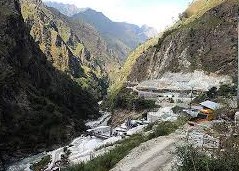Power Ministry and DRDO Sign MoU for Early Warning System
The Union Ministry of Power and the Defence Research and Development Organisation (DRDO) have recently signed a Memorandum of Understanding (MoU) to set up early warning systems for vulnerable hydro projects or power stations in the hilly regions.
What is an early warning system?
An early warning system (EWS) is an integrated system of:
- Hazard monitoring, forecasting and prediction
- Disaster risk assessment
- Communication and preparedness activities system
- Processes that enable individuals, communities, governments, and businesses to take timely action to minimize disaster risks.
An effective early warning system has four key inter-related elements:
- Disaster risk knowledge obtained by systematically collecting data and assessing disaster risks
- Detecting, monitoring, analyzing, and forecasting hazards and their consequences
- Dissemination and communication from the official source of timely, accurate and actionable warnings and related information on likelihood and impact of the disaster
- Disaster preparedness at all levels to respond to the warnings received
These four inter-related components can be work effectively if they are coordinated within and across sectors and multiple levels and include a feedback mechanism for continuous improvement.
What is the objective of the MoU between the Power Ministry and the DRDO?
- According to this MoU, the DRDO and the Ministry of Power will collaborate towards developing suitable mitigation measures against avalanches, landslides, glaciers, glacial lakes, and other geo-hazards.
- The DRDO’s expertise will be used in developing a comprehensive Early Warning System (EWS) for vulnerable hydro projects or power stations in hilly regions.
Before this MoU was signed, the Union Power Ministry had signed similar contracts with the CSIR-National Geophysical Research Institute (NGRI), Indian Meteorological Department (IMD), Wadia Institute of Himalayan Geology (WIHG) and the ISRO’s National Remote Sensing Centre (NRSC) to implement the EWS.
Why is EWS necessary for hydro projects/power stations in hilly regions?
Currently, the majority of hydropower projects and dams in hilly regions do not have early warning systems. The necessity of the EWS was brought to the spotlight following the unprecedented floods caused by an avalanche in Uttarakhand’s Chamoli District in February 2021. The impact of the disaster was exacerbated by the destruction of two hydropower projects. Prior to the 2021 Chamoli disaster, another major flood in 2013 that occurred in Uttarakhand damaged at least 10 hydropower projects.
Month: Current Affairs - December, 2022
Category: India Nation & States Current Affairs


